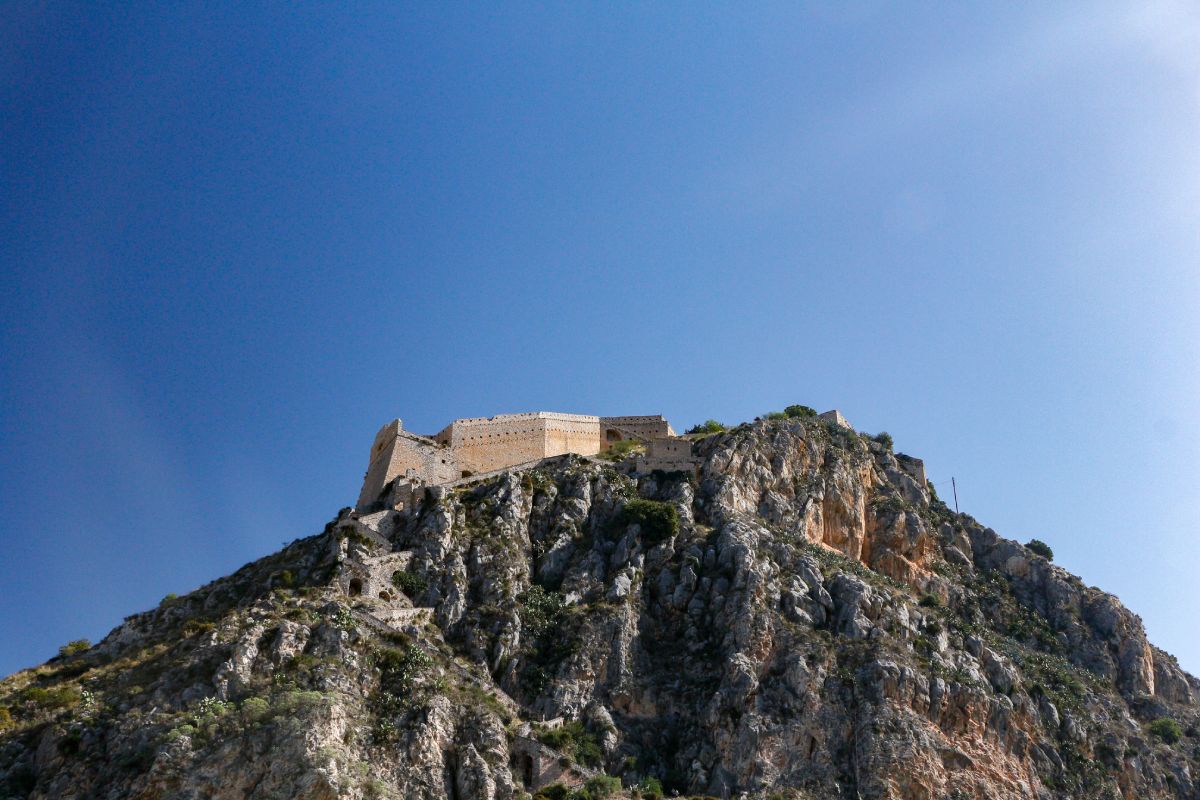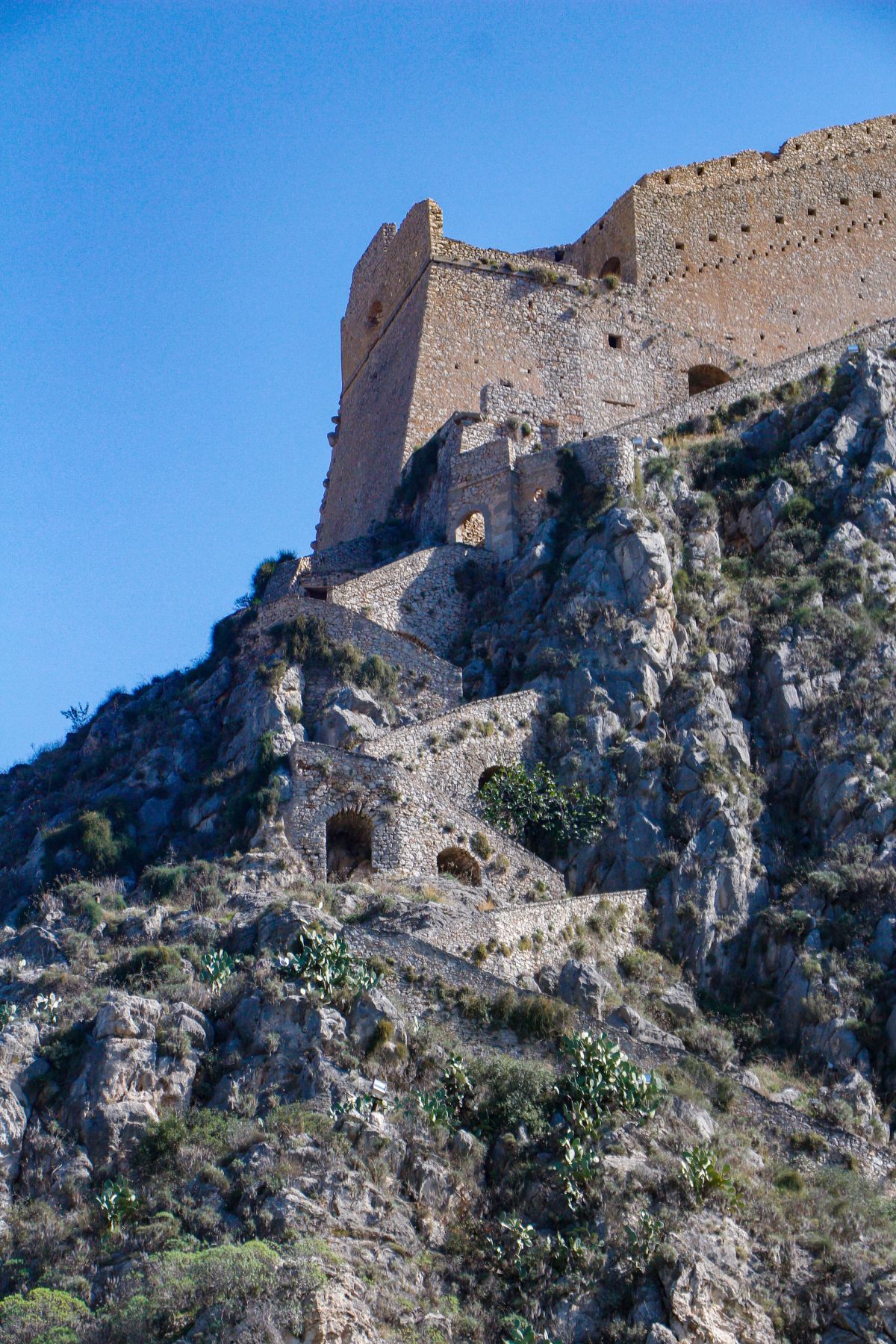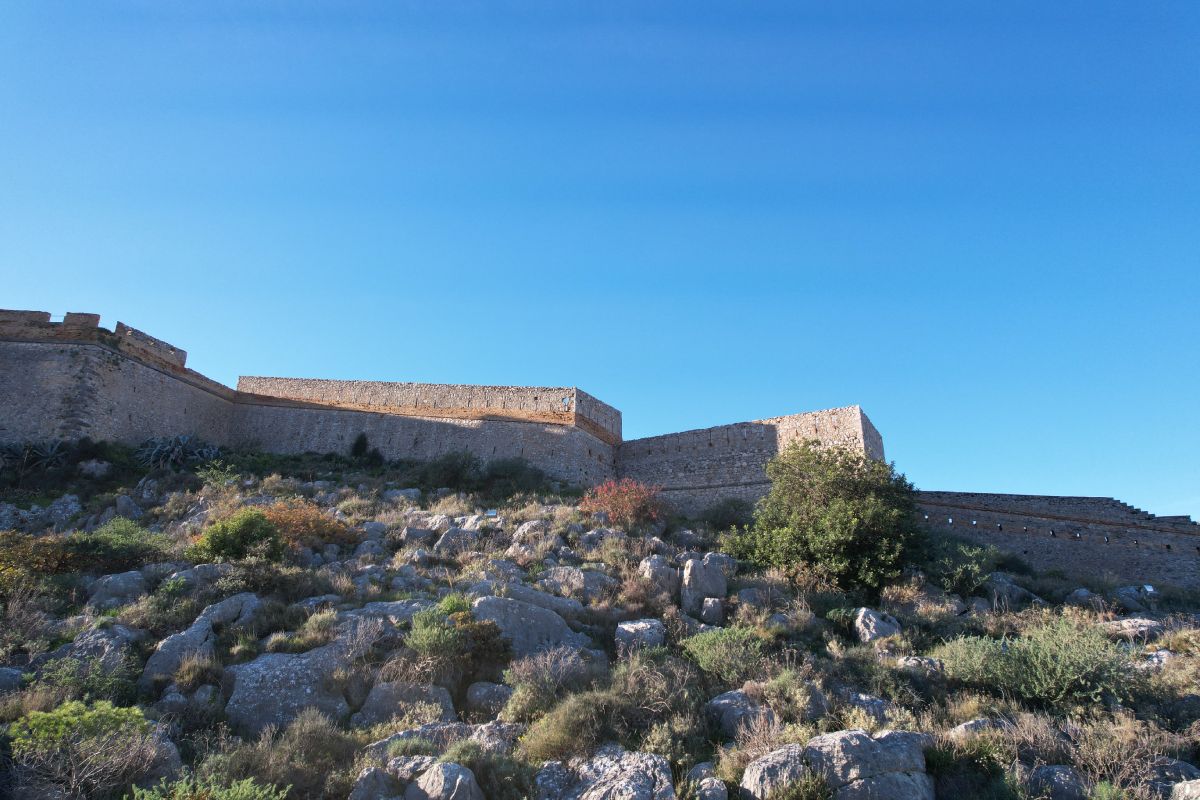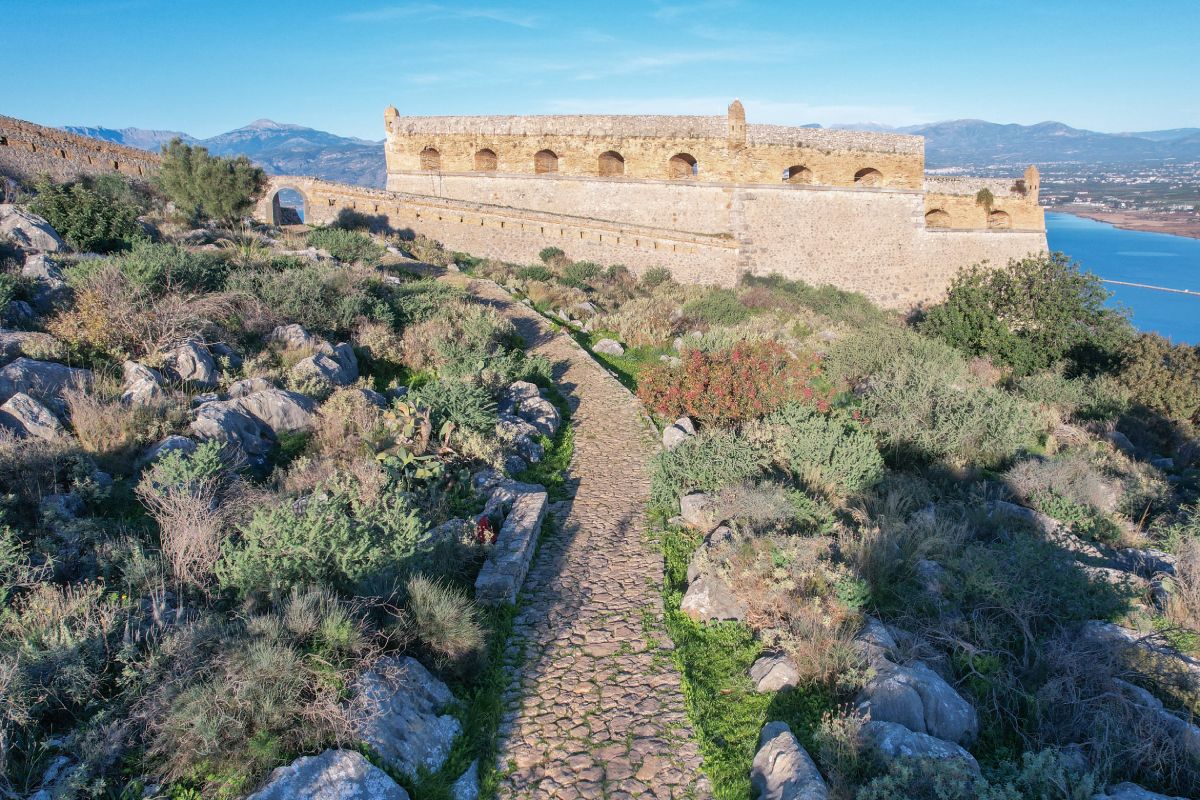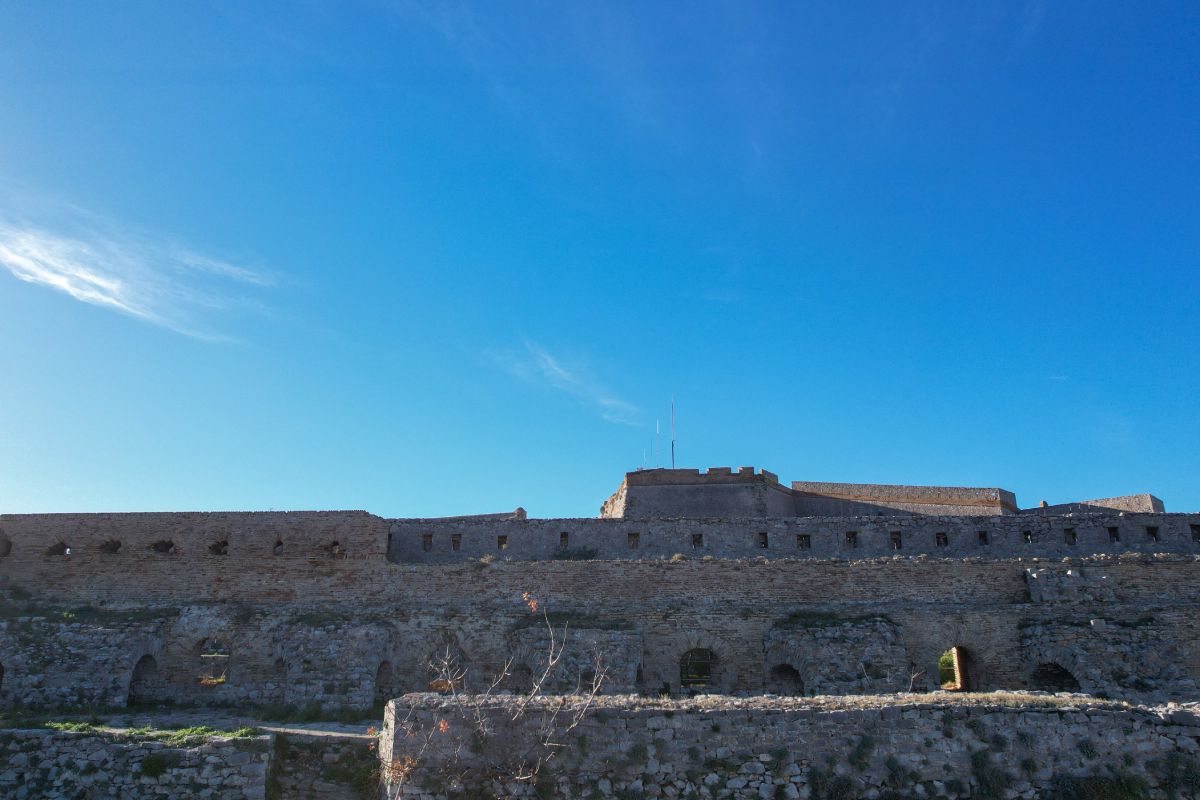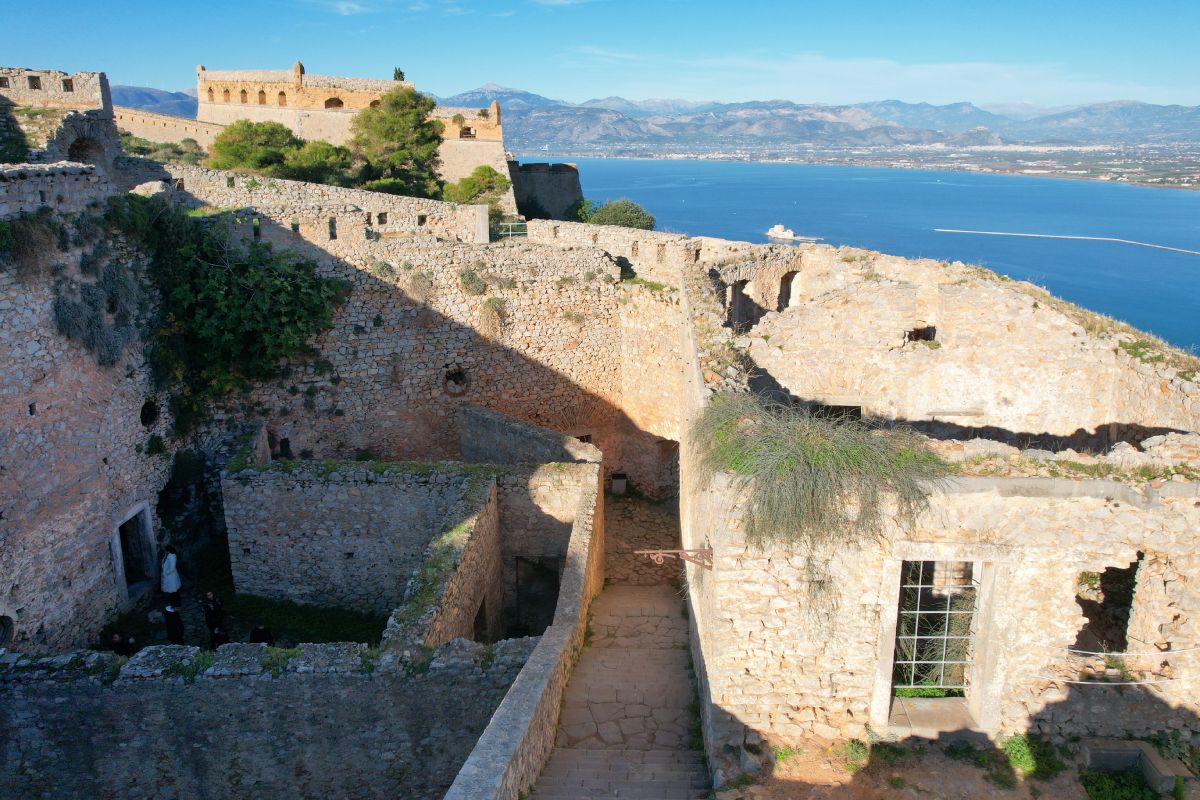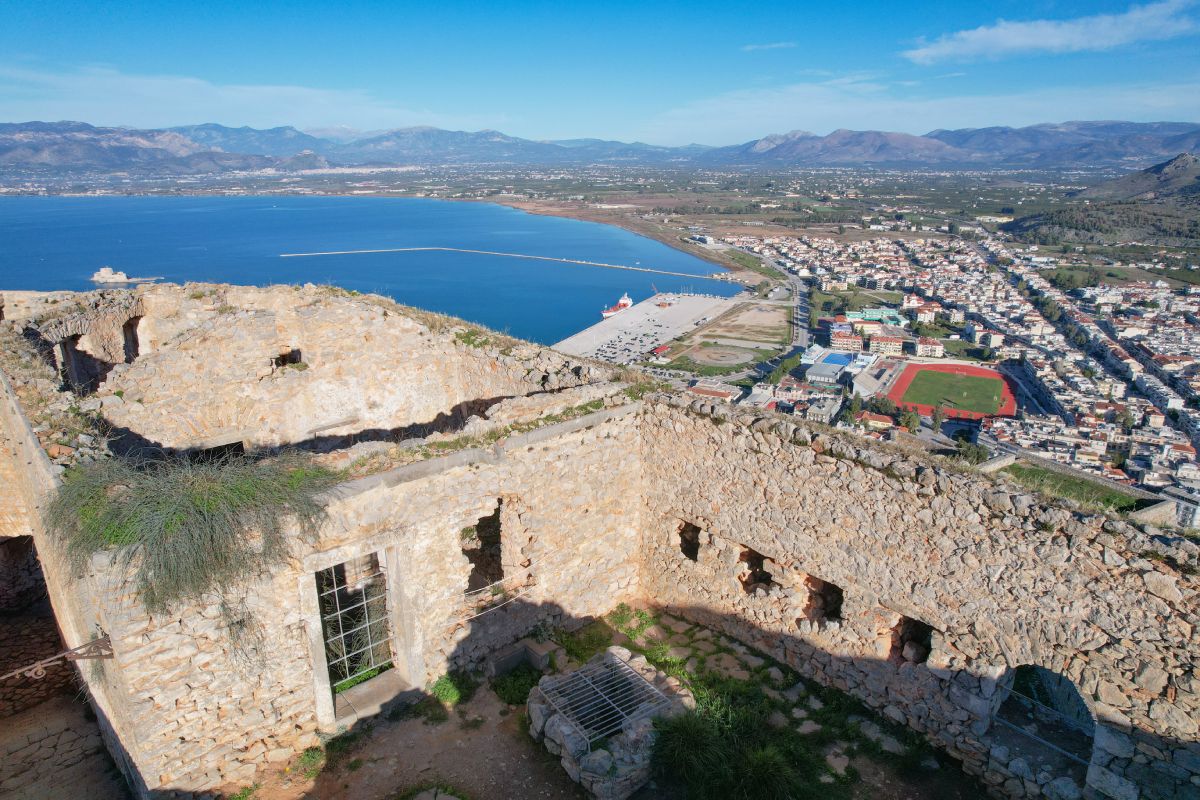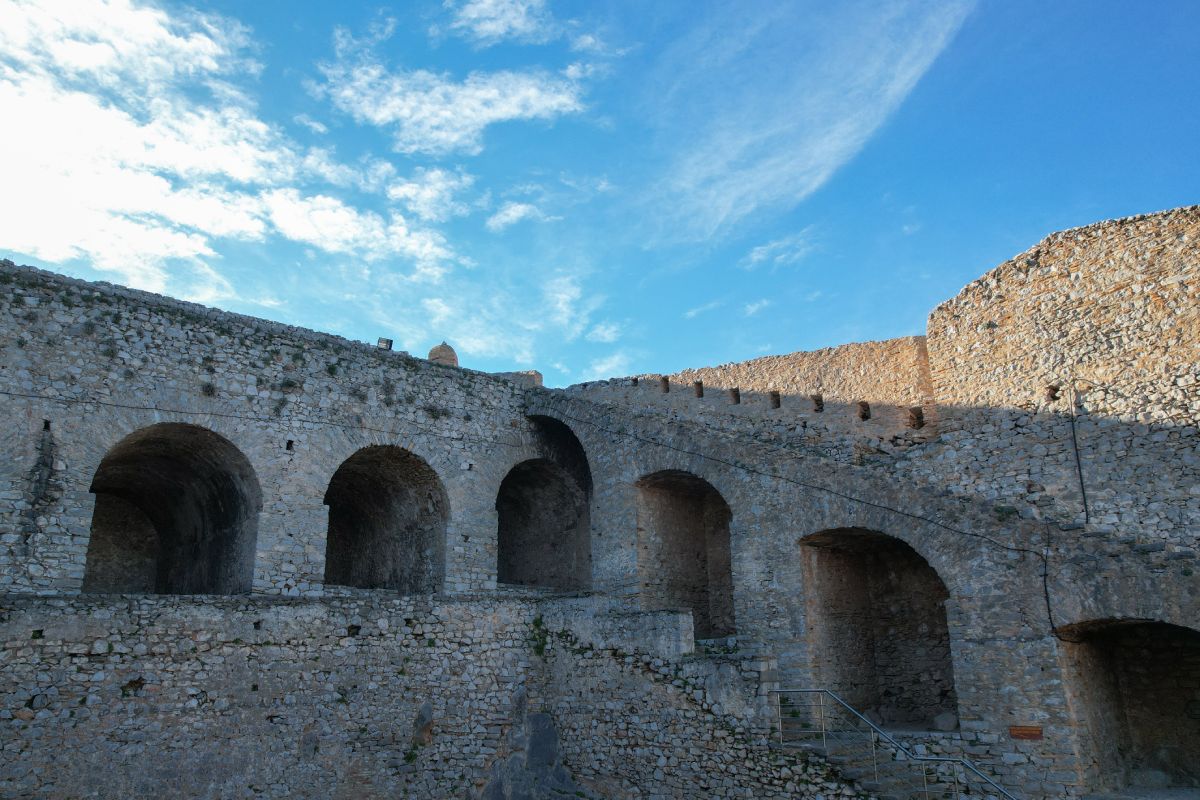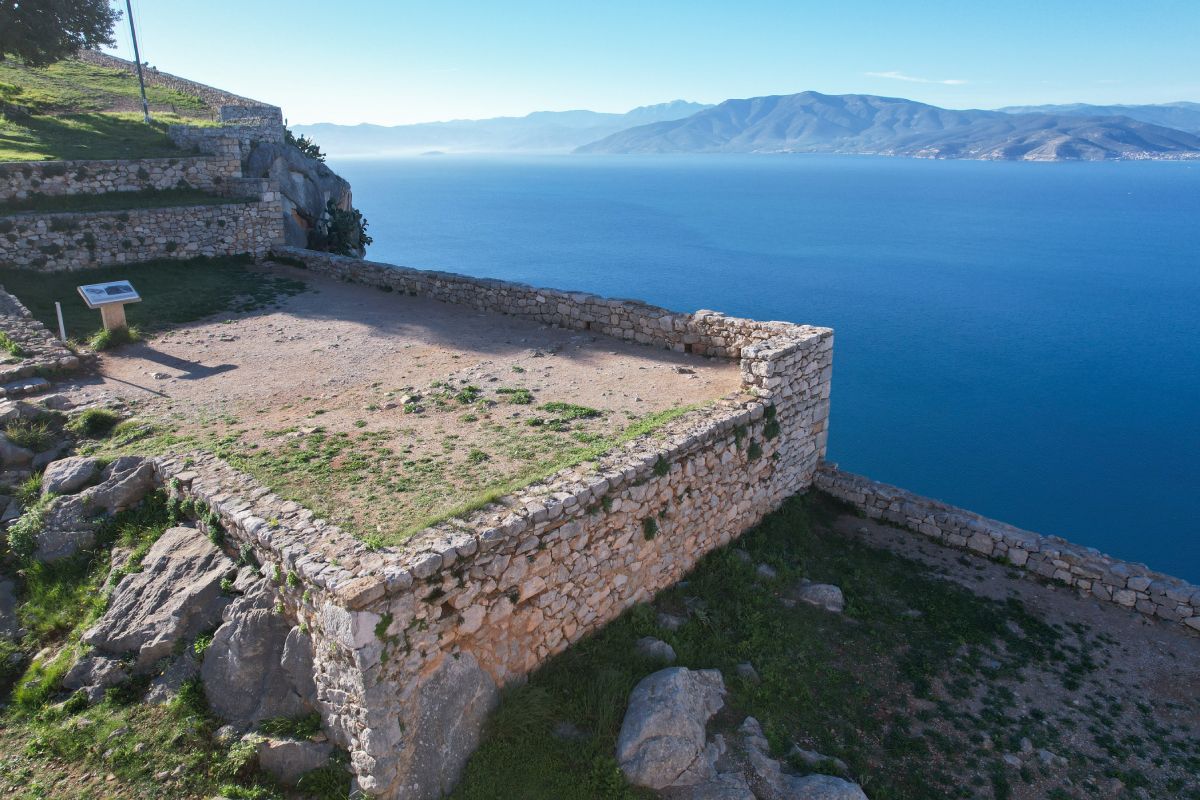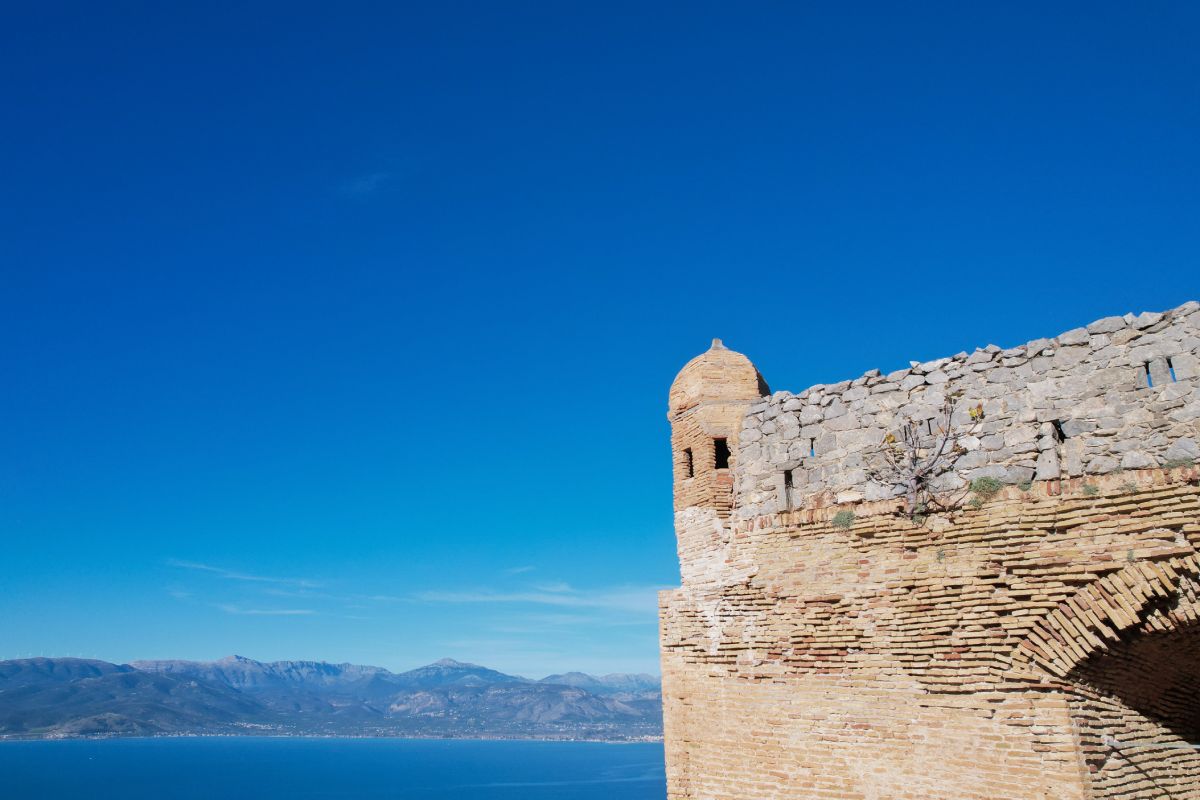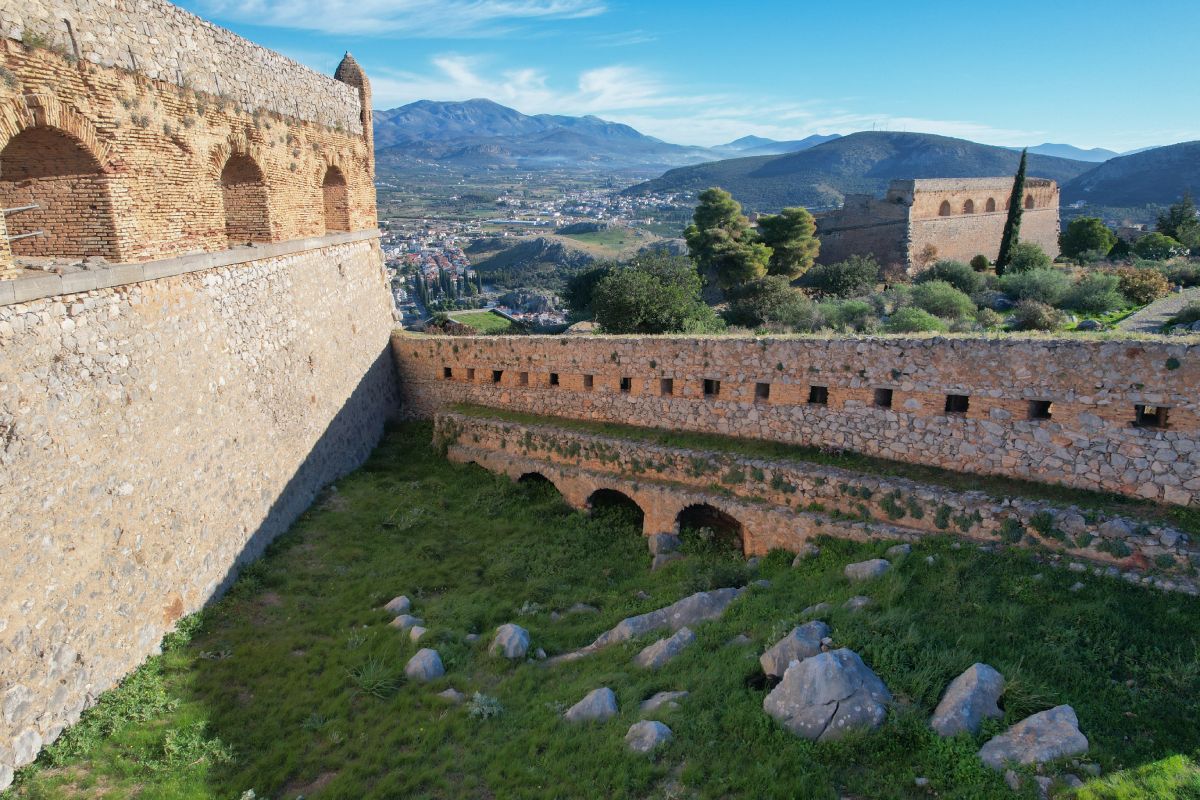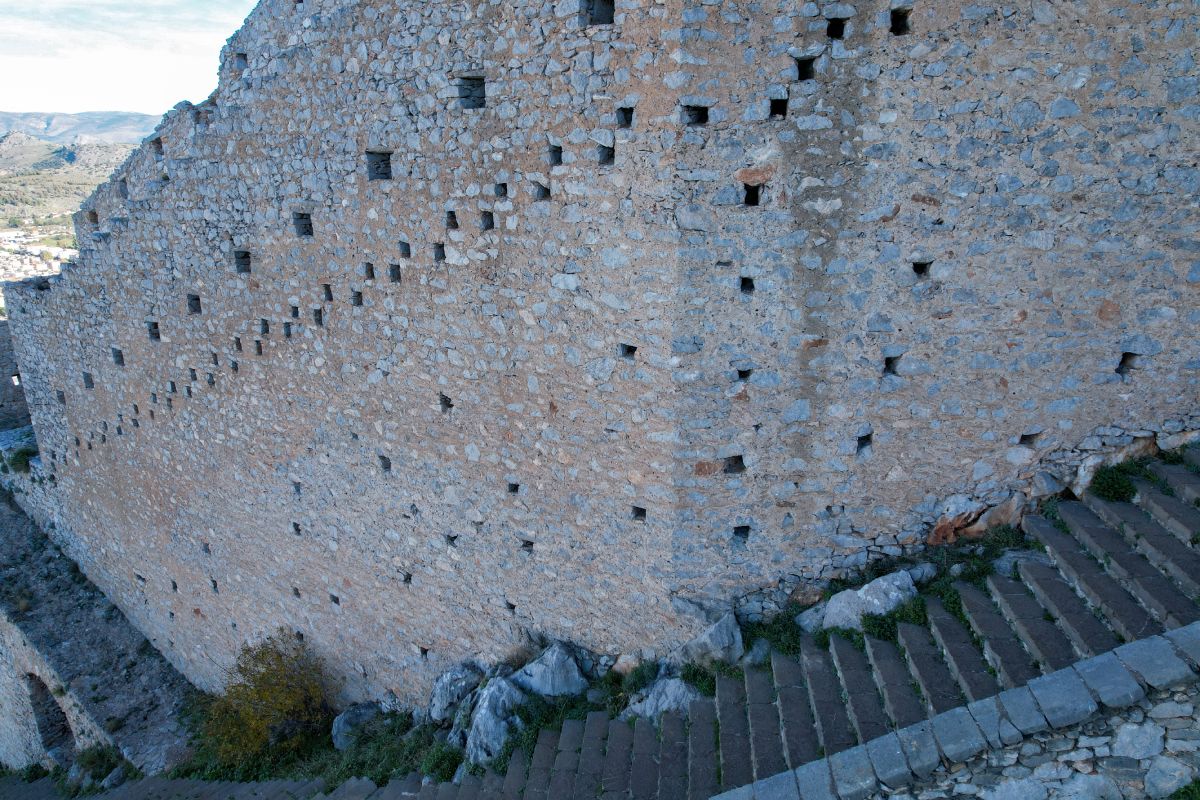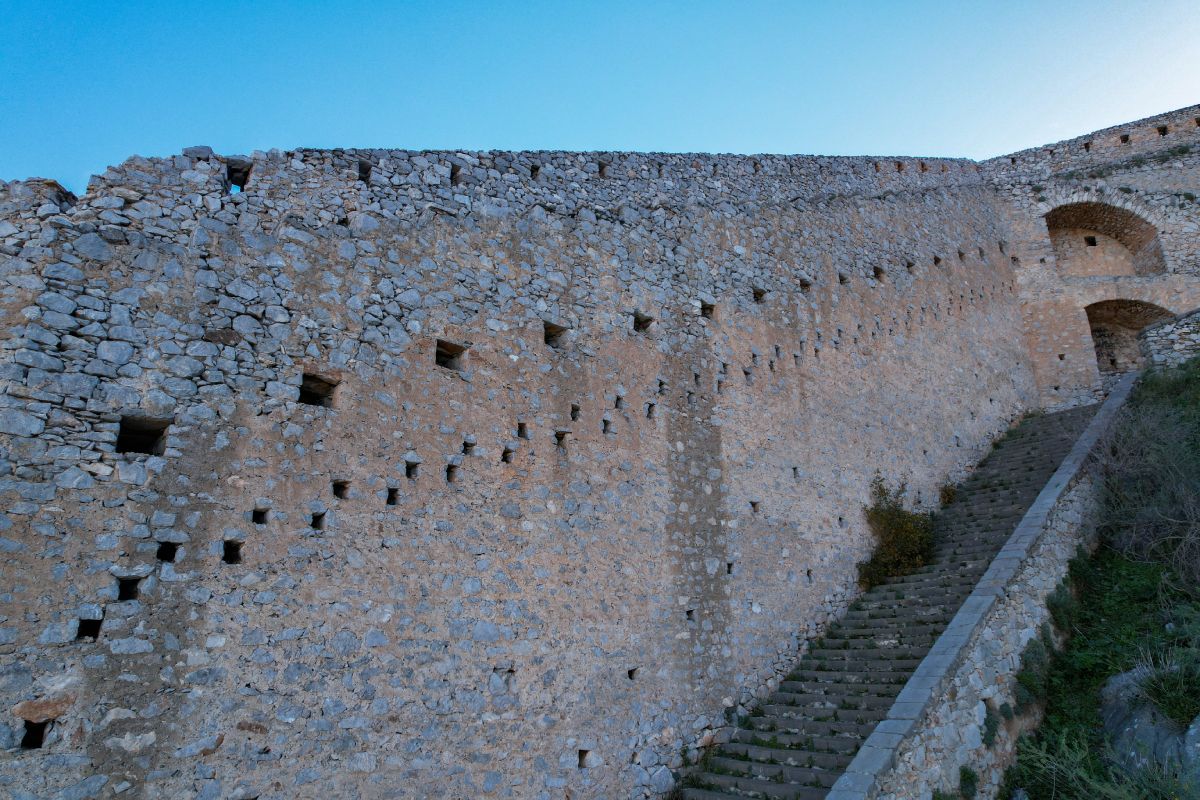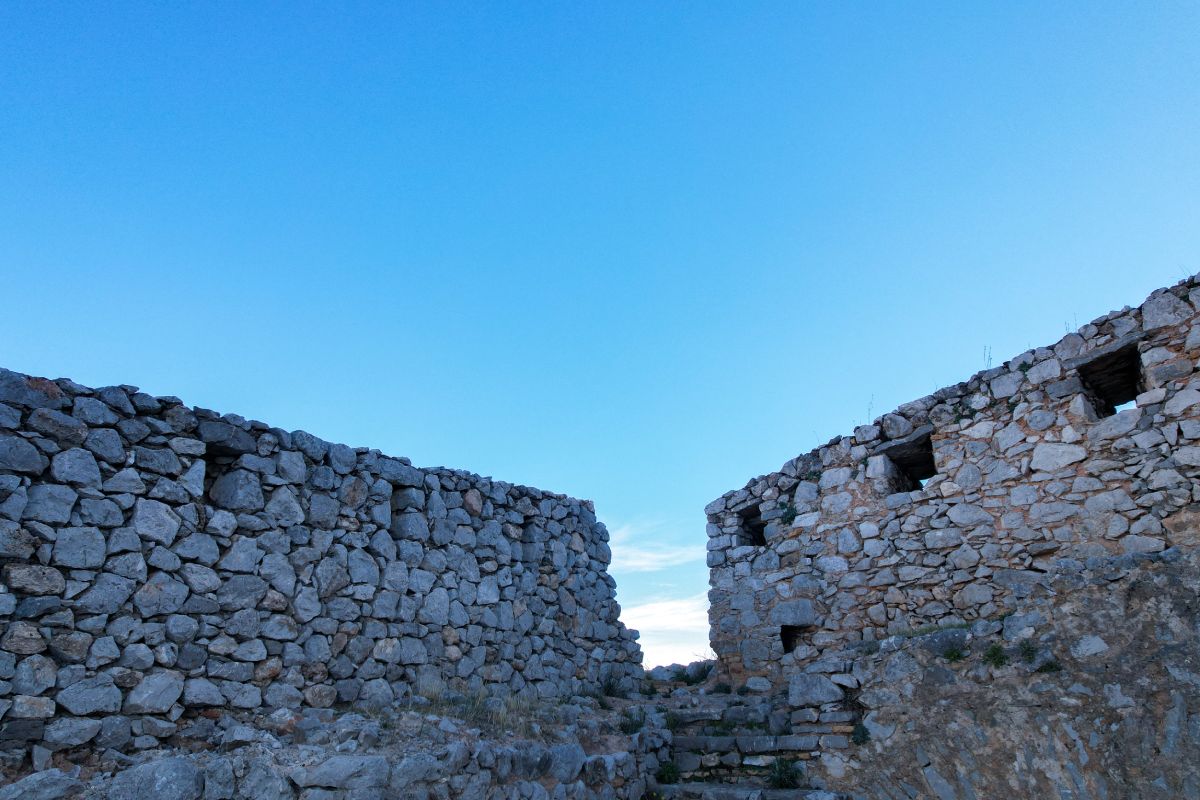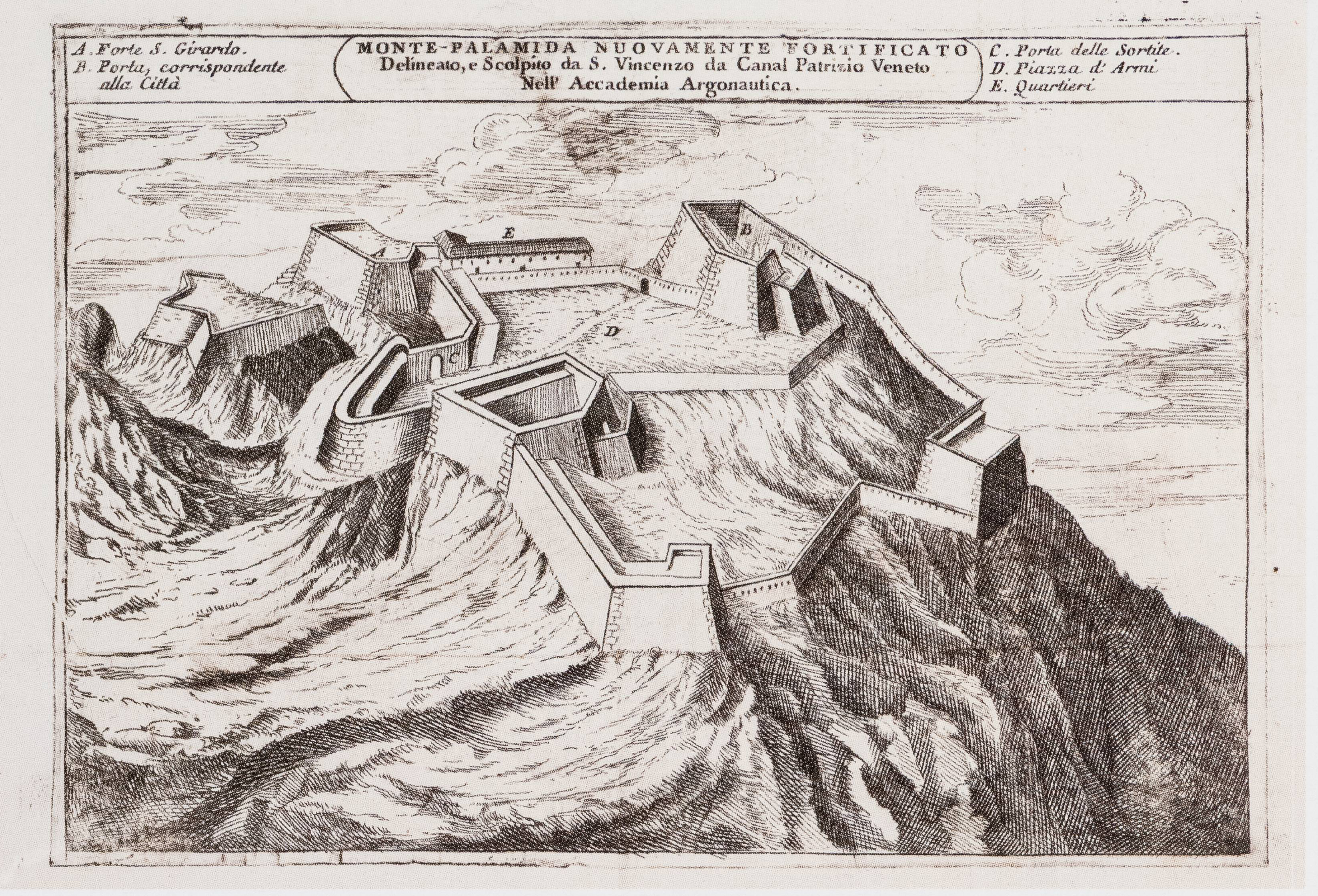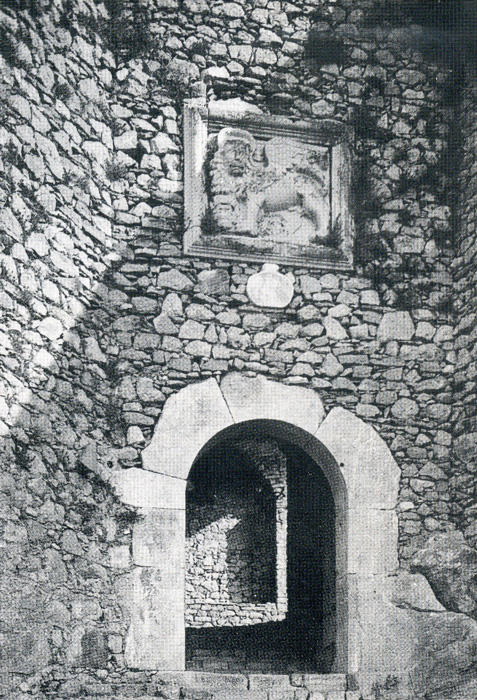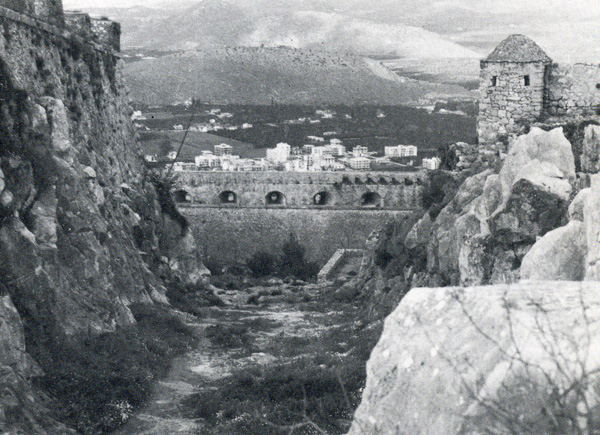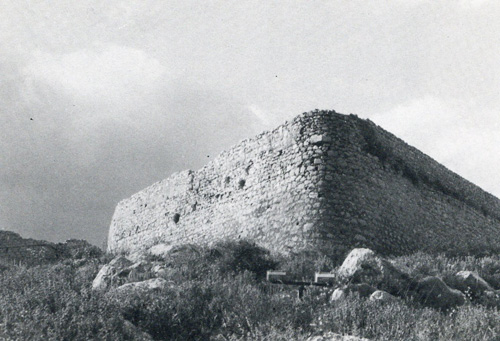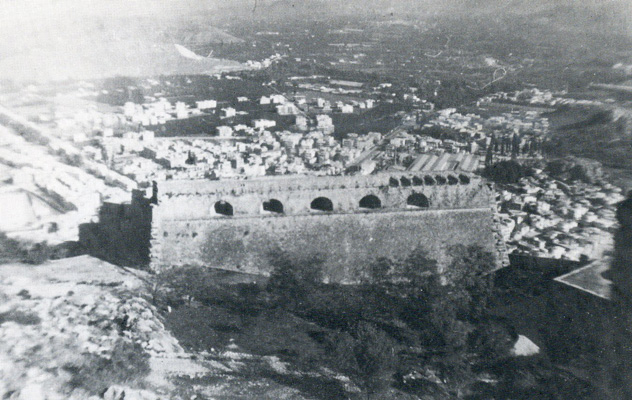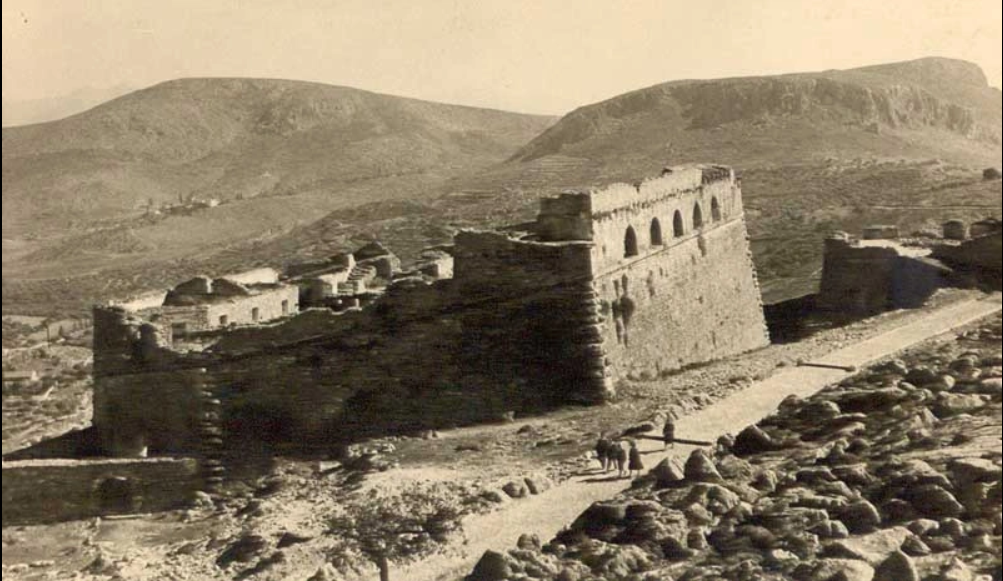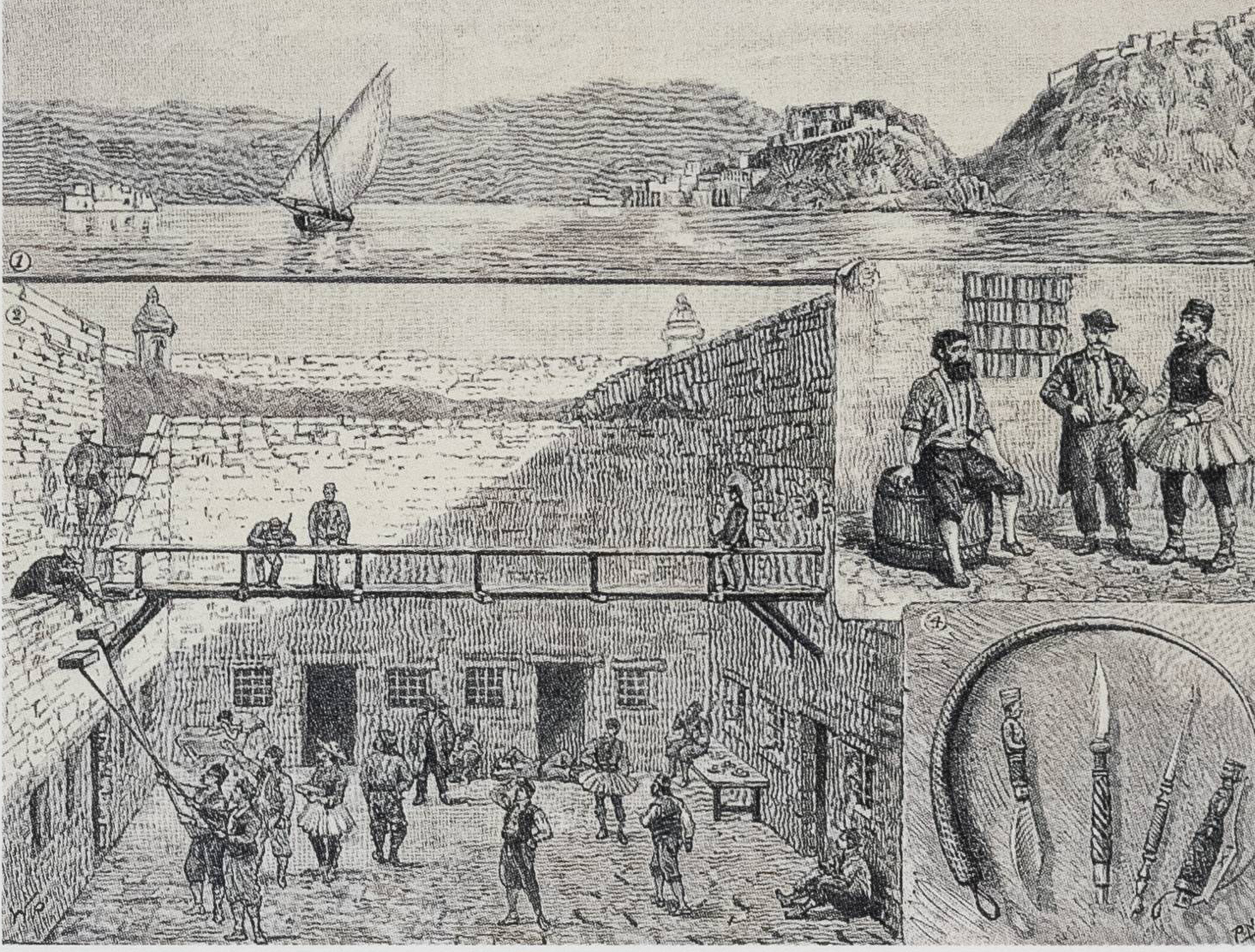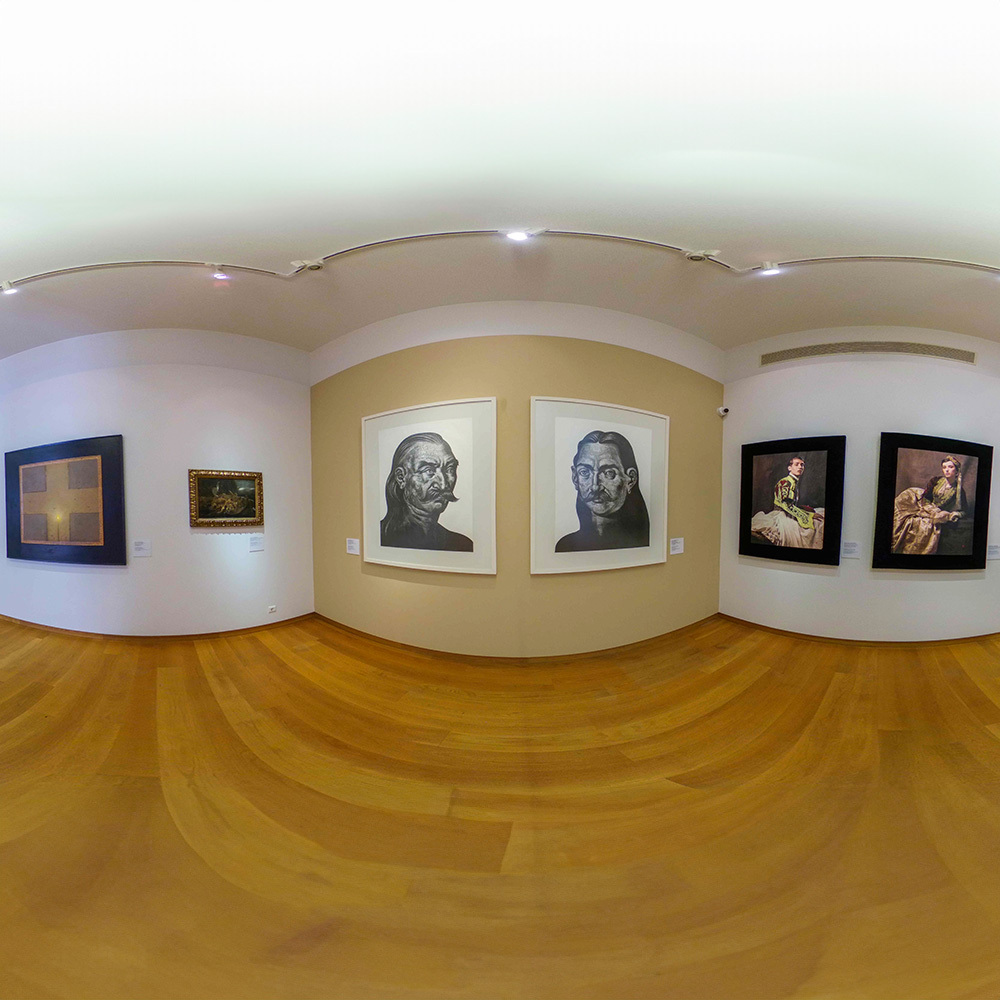Palamidi
The Fort of Palamidi is located at the top of the hill of the same name at an altitude of 216 metres, to the east of the city of Nafplio. It owes its name to the Homeric hero Palamidis, son of Nafplios and Isioni, and grandson of Poseidon. A doctor and astronomer, Palamidis is said to have invented lighthouses, dice, and the four letters of the alphabet which supplemented that of the Phoenicians.
The fort was built during the period 1711-1715 by the Venetian General Supervisor of the Fleet, Agostino Sagredo, together with the engineers Giancix and Lasalle, to facilitate the military and naval operations of the Venetian conquerors. It is one of the most significant achievements of Venetian fortifications architecture, with a total of eight fortified units, each with its cisterns, food and weapon warehouses, and even barracks. These bastions are independent, so that if any one of them is captured, the others are able to continue the defense of the fort. The first six bastions (Agios Andreas, Robert, Themistokles, Achilleas, Miltiades, and Leonidas) were built during the reign of the Venetians, while one additional Venetian bastion, Epaminondas, which had been only partially built, was completed after the conquest of the castle by the Ottomans, who constructed the eighth and last bastion, Phocion.
The stone staircase which begins in the city of Nafplio and the Staikopoulos Park ends at the central bastion, Agios Andreas, where the chapel of Agios Andreas is found. Built in 1712 by the Venetians, it was initially dedicated to Agios Gerardos, the patron saint of the Sagredo family. According to posted signs, at the north side of the chapel there is a dark dungeon, which is said to have been the prison of Kolokotronis. The Miltiades bastion, which was used as a prison for hardened criminals from 1840 until around 1926, is also a site worth visiting.

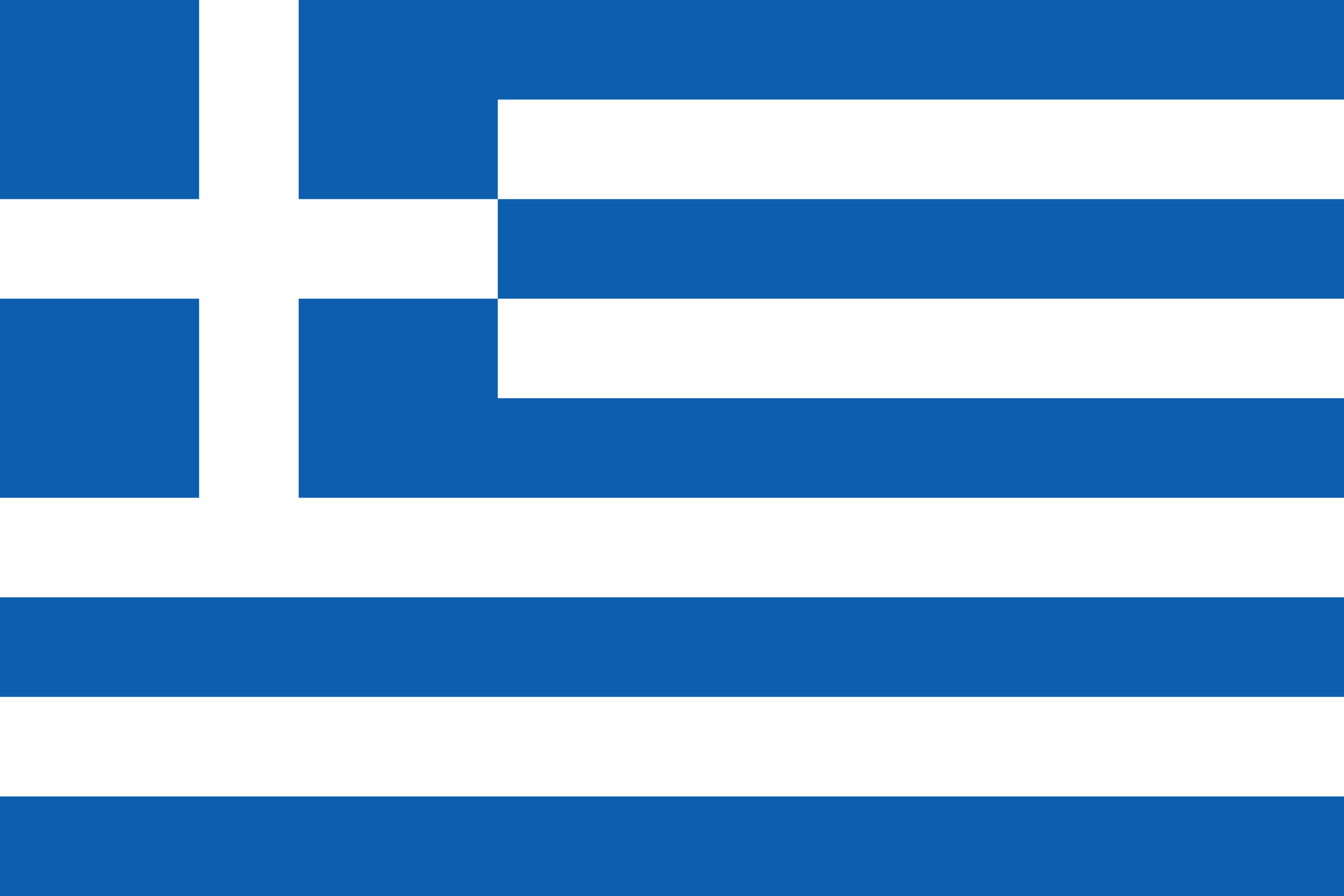
.svg.png)


